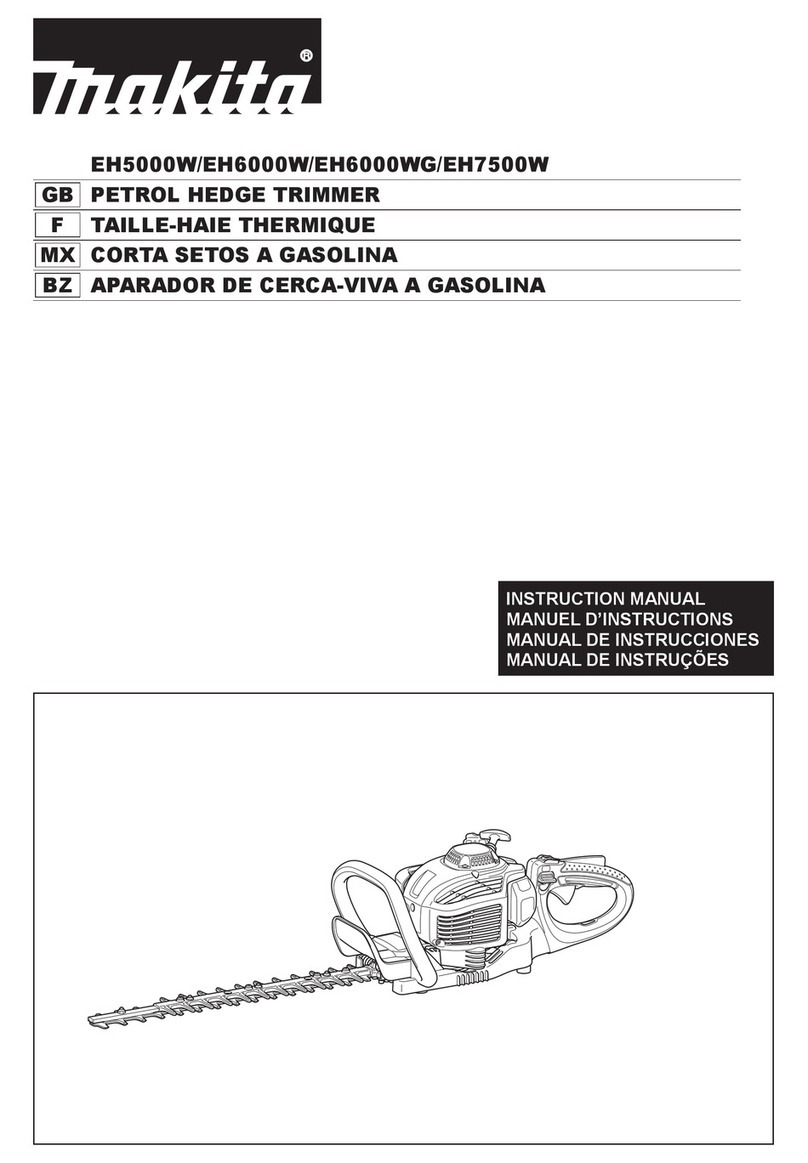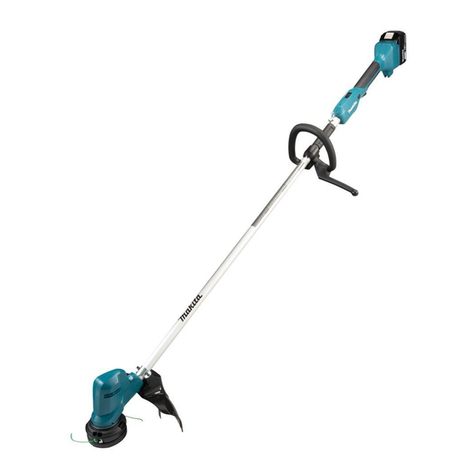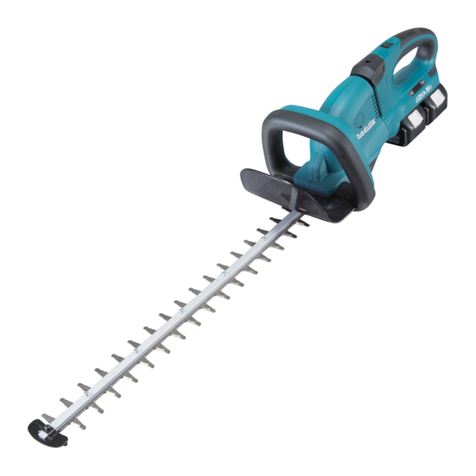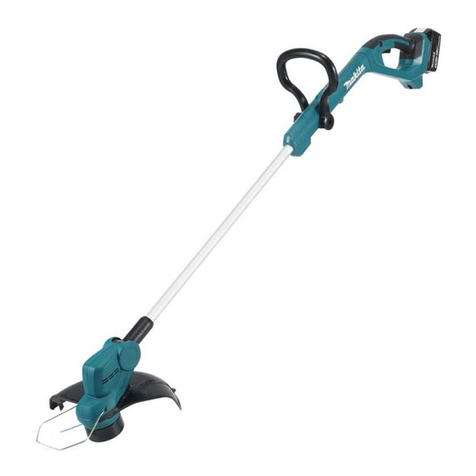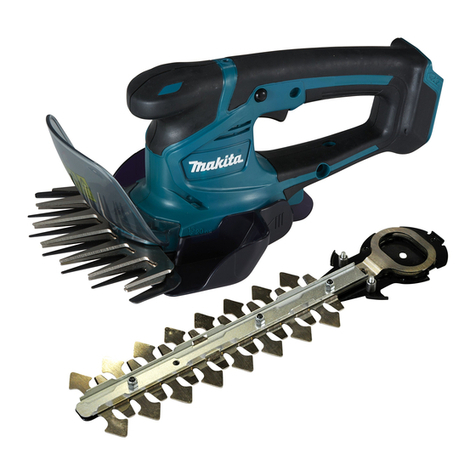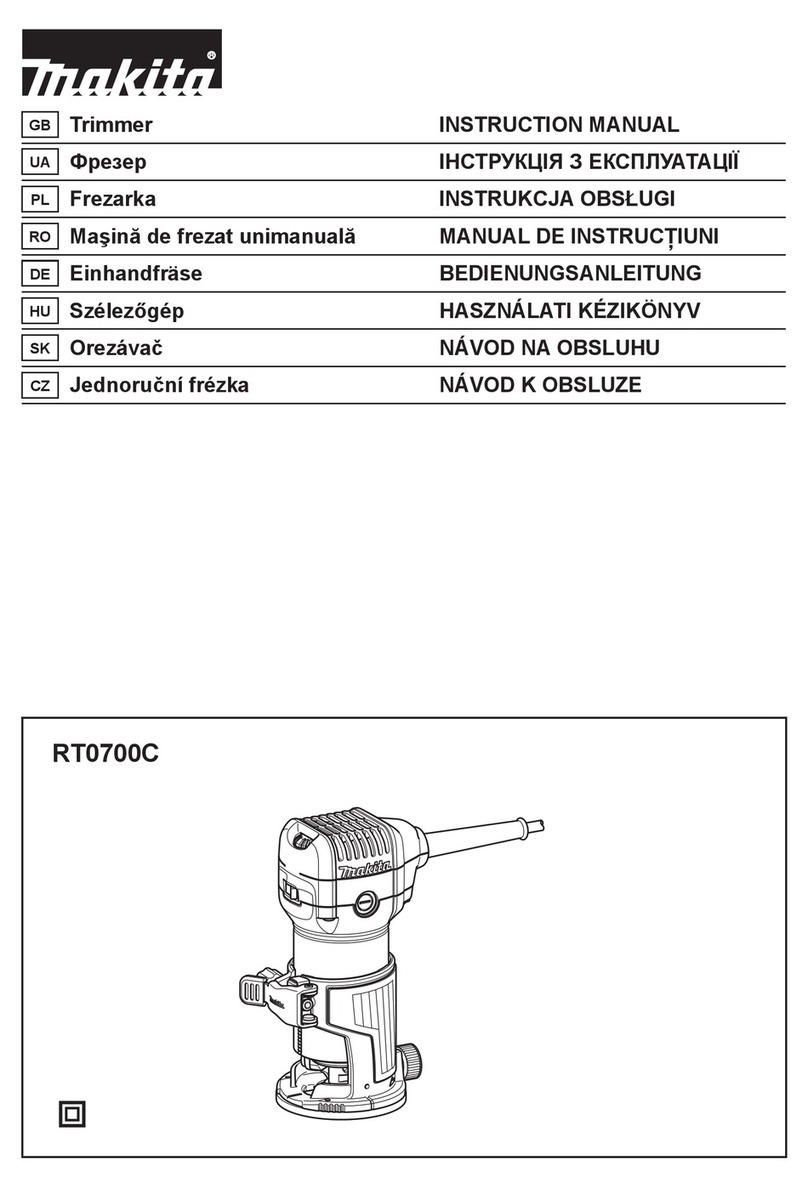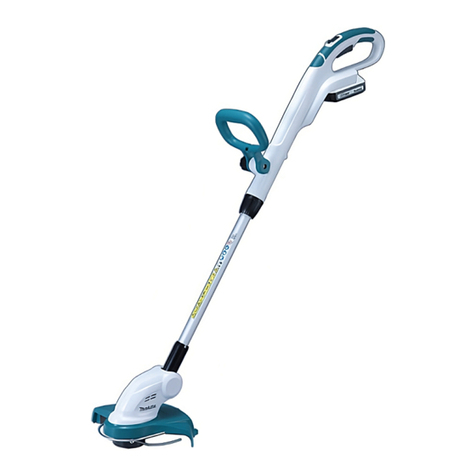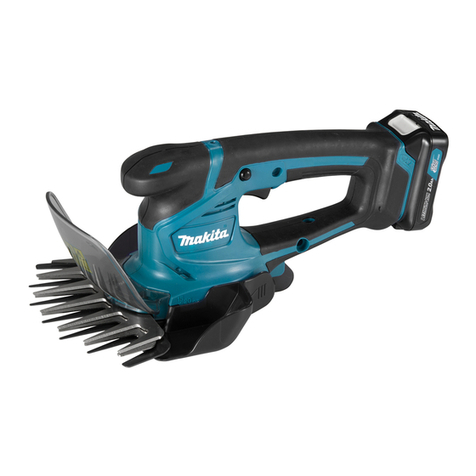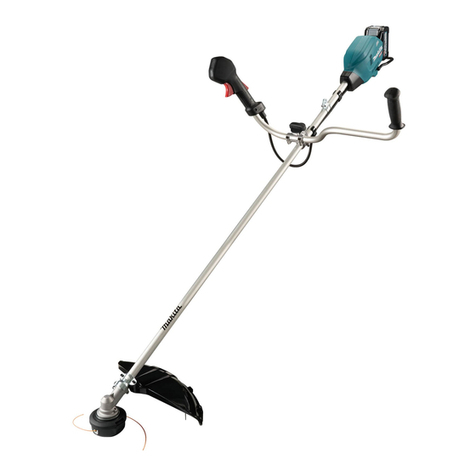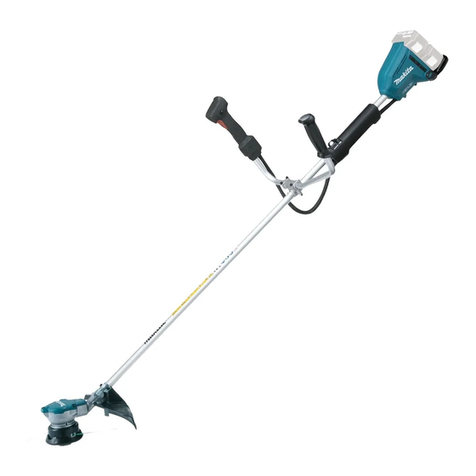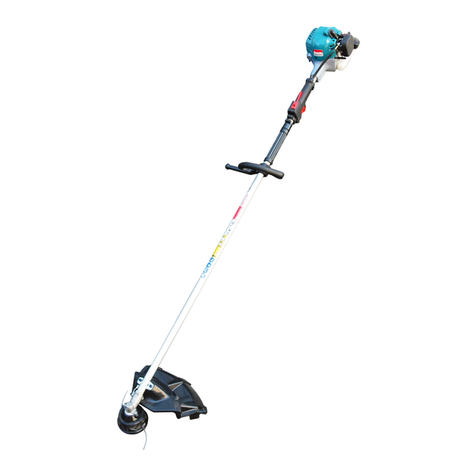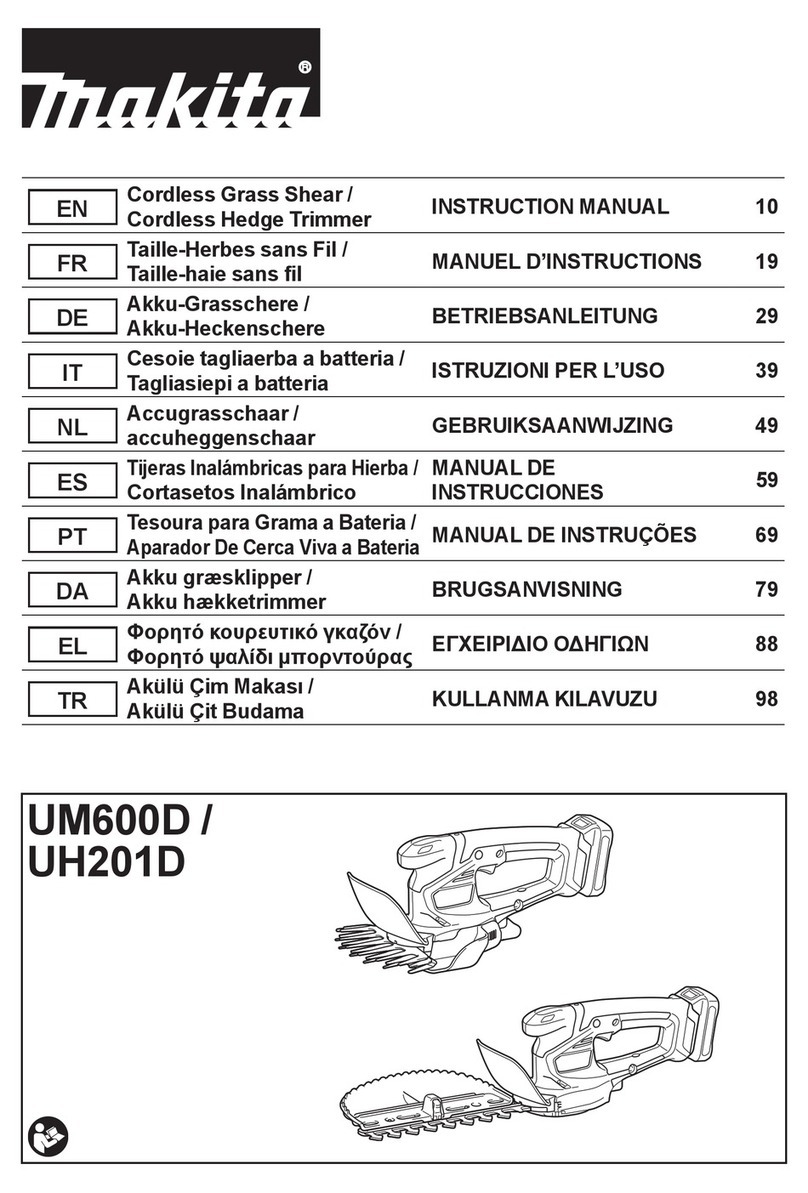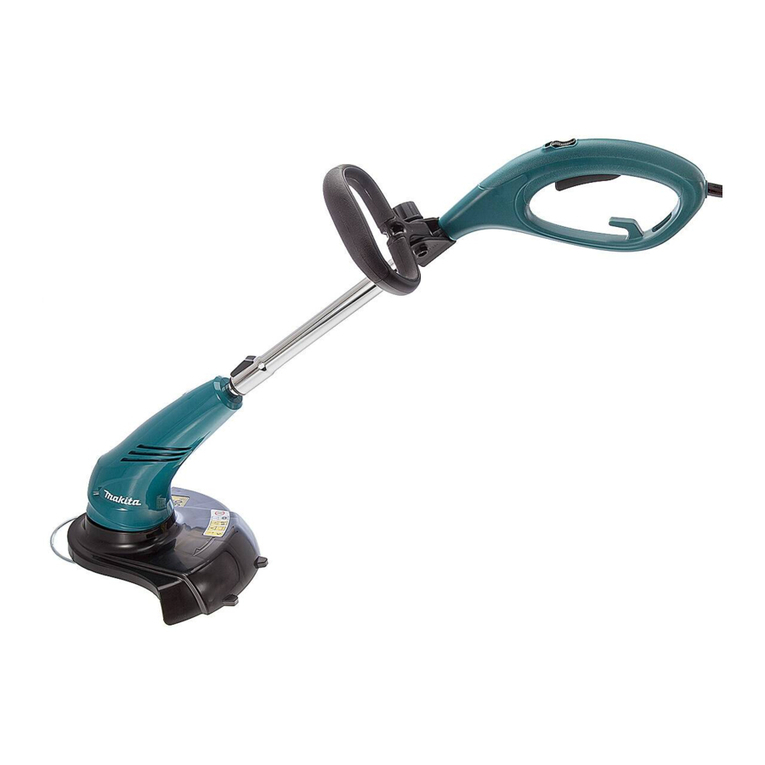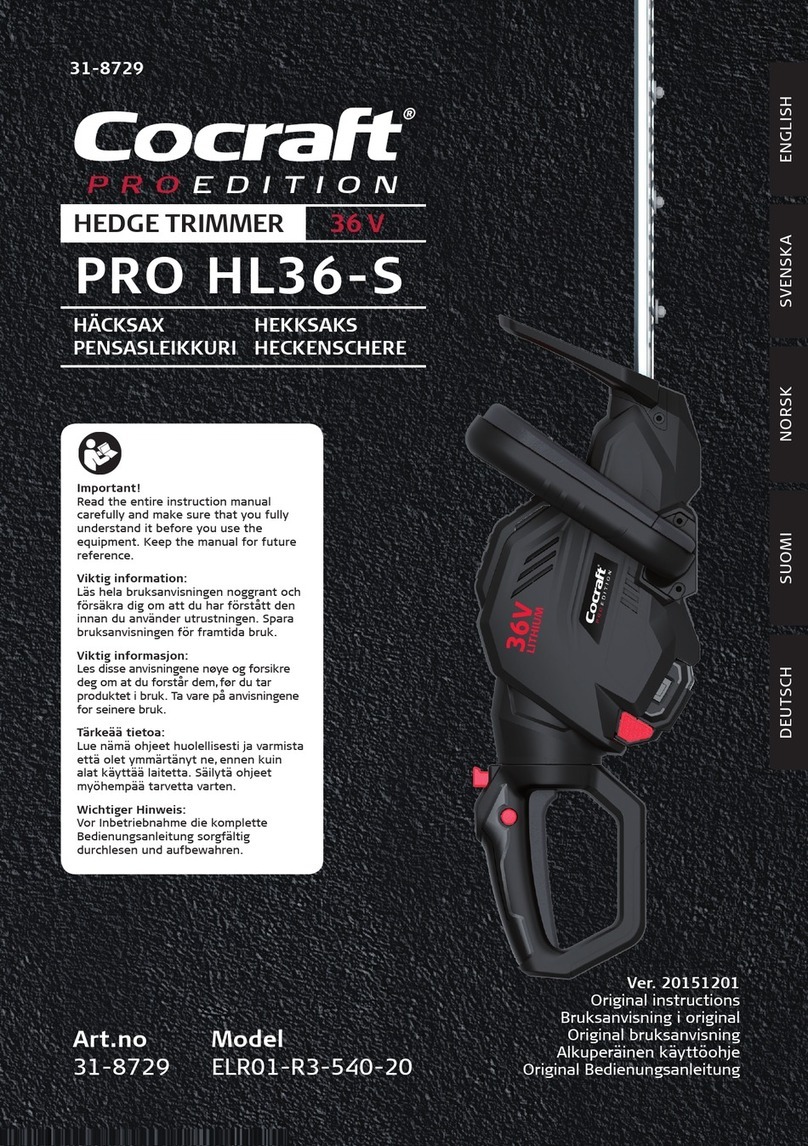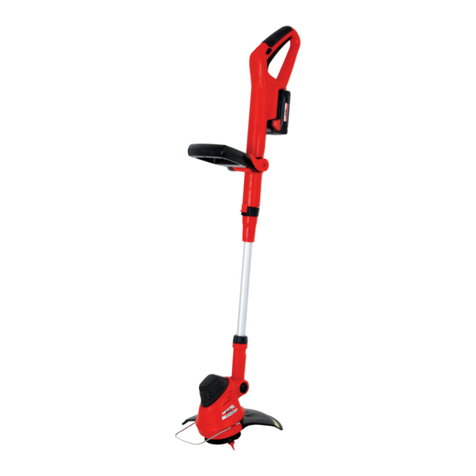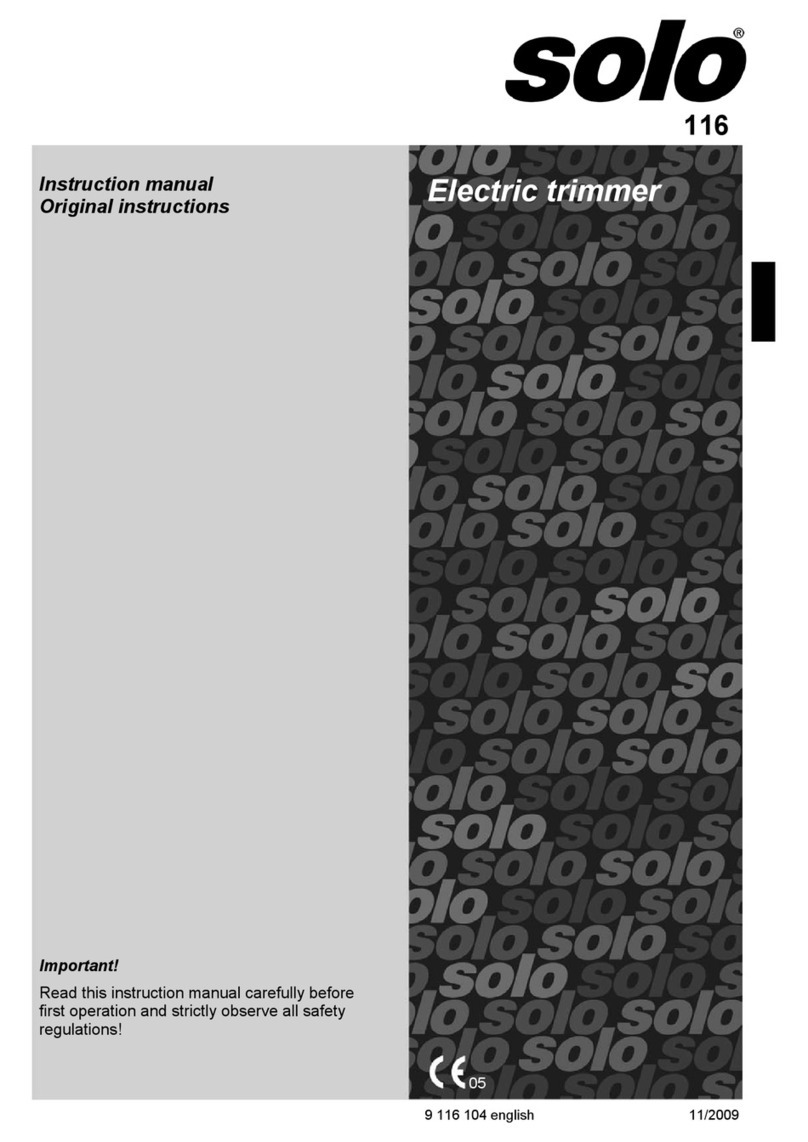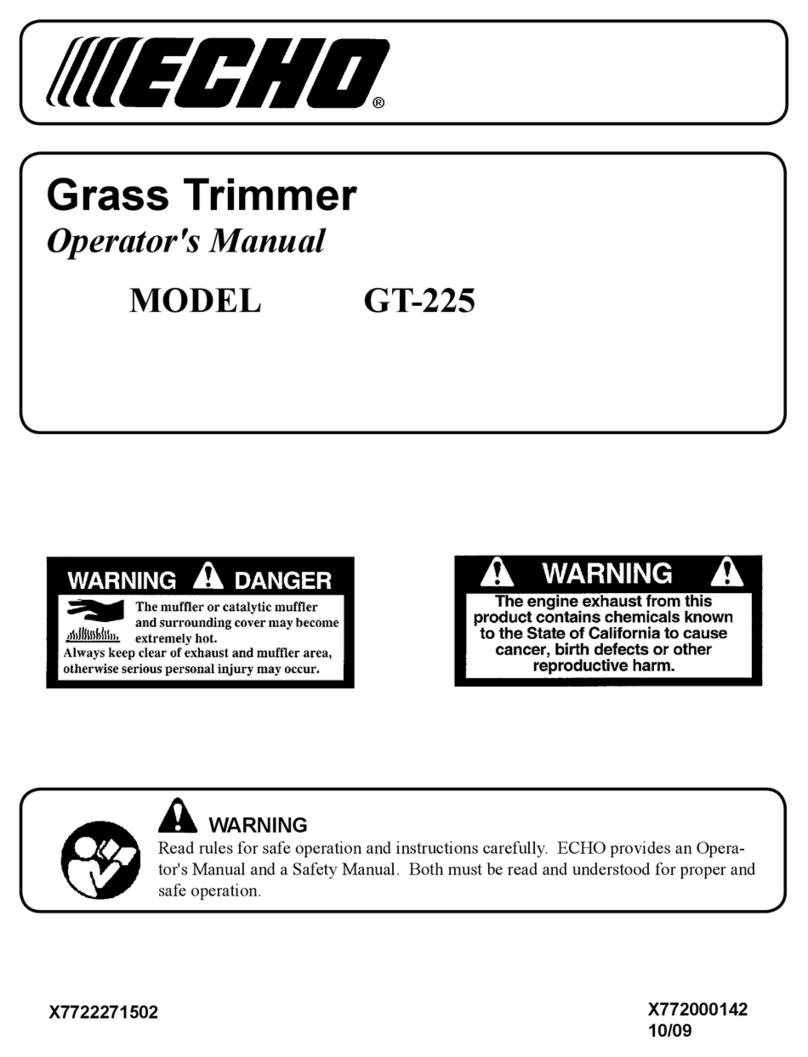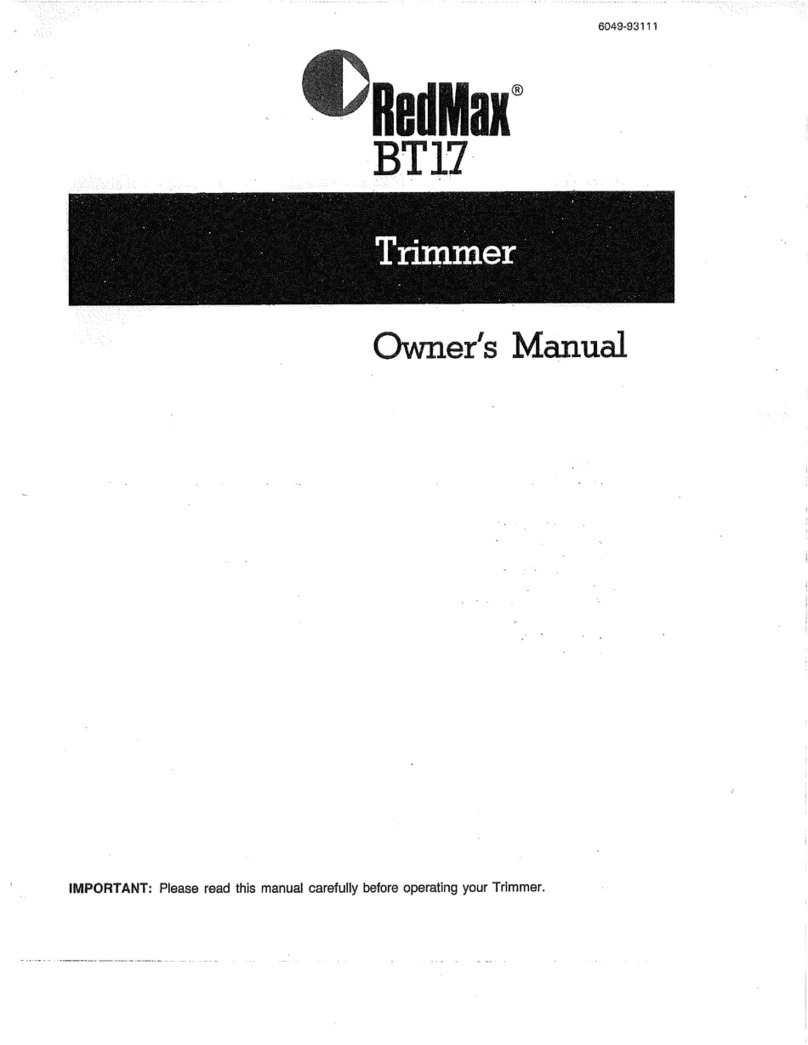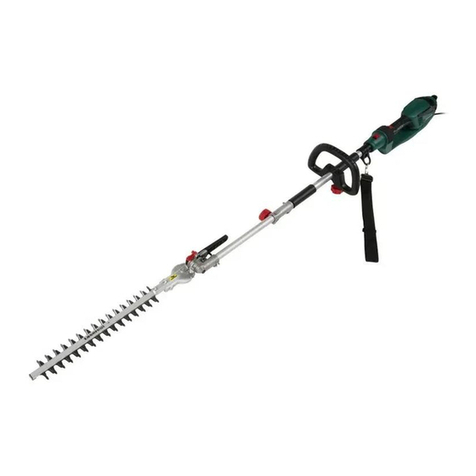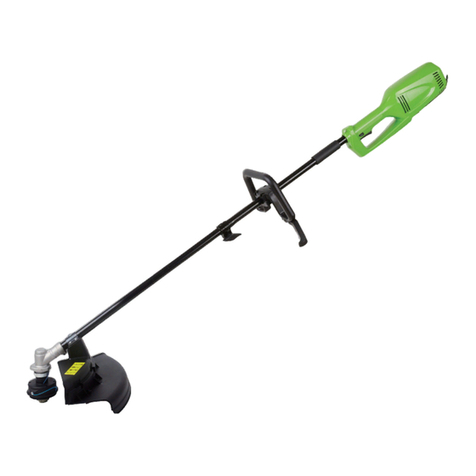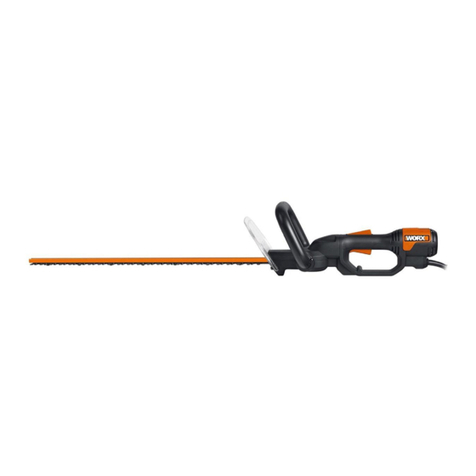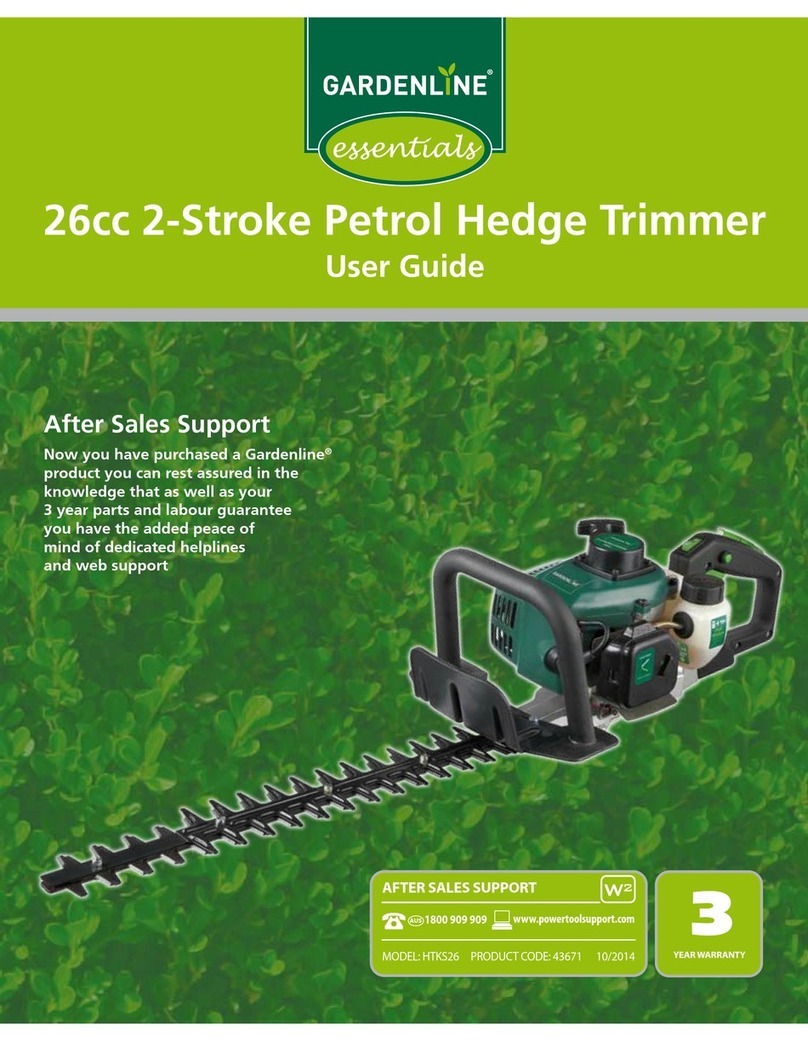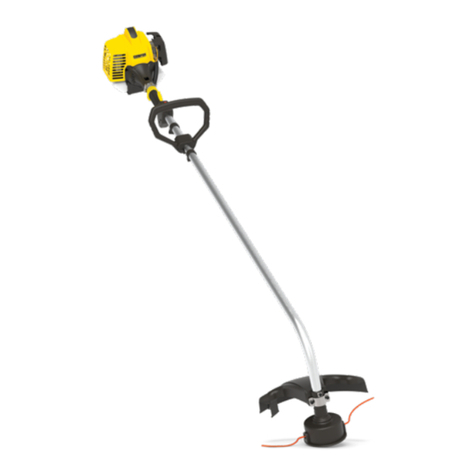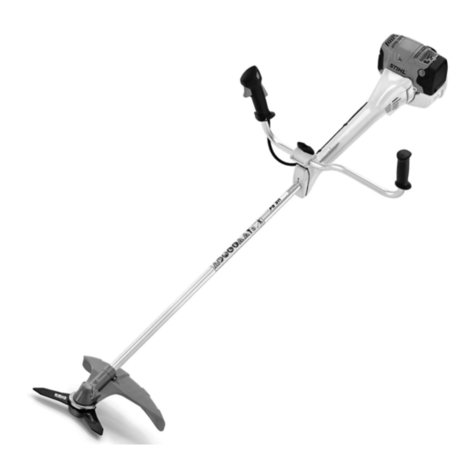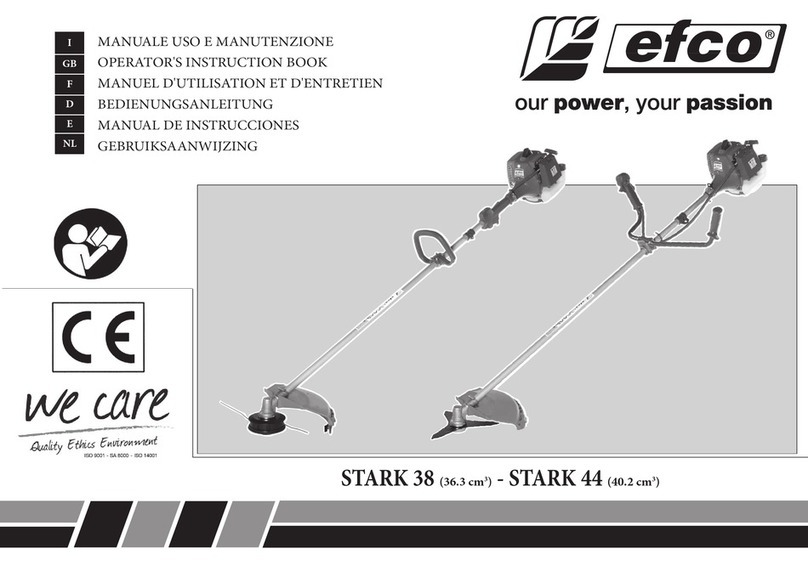8
6. When battery pack is not in use, keep it away
from other metal objects, like paper clips, coins,
keys, nails, screws or other small metal objects,
that can make a connection from one terminal to
another. Shorting the battery terminals together
may cause burns or a fire.
7. Under abusive conditions, liquid may be ejected
from the battery; avoid contact. If contact
accidentally occurs, flush with water. If liquid
contacts eyes, seek medical help. Liquid ejected
from the battery may cause irritation or burns.
Putting into operation
1. Before assembling or adjusting the tool, remove
the battery cartridge.
2. Before handling the cutter blade, wear protective
gloves.
3.
Before installing the battery cartridge, inspect the tool
for damages, loose screws/nuts or improper assembly.
Sharpen blunt cutter blade. If the cutter blade is bent or
damaged, replace it. Check all control levers and
switches for easy action. Clean and dry the handles.
4. Never attempt to switch on the tool if it is
damaged or not fully assembled. Otherwise
serious injury may result.
5. Adjust the shoulder harness and hand grip to suit
the operator's body size.
6. When inserting a battery cartridge, keep the
cutting attachment clear of your body and other
object, including the ground. It may rotate when
starting and may cause injury or damage to the
tool and/or property.
7. Remove any adjusting key, wrench or blade cover
before turning the tool on. An accessory left
attached to a rotating part of the tool may result in
personal injury.
OPERATION
1. In the event of an emergency, switch off the tool
immediately.
2.
If you feel any unusual condition (e.g. noise, vibration)
during operation, switch off the tool. Do not use the tool
until the cause is recognized and solved.
3. The cutting attachment continues to rotate for a
short period after turning the tool off. Don't rush to
contact the cutting attachment.
4. During operation, use the shoulder harness. Keep
the tool on your right side firmly.
5. Do not overreach. Keep proper footing and
balance at all times. Watch for hidden obstacles
such as tree stumps, roots and ditches to avoid
stumbling.
6. Never work on a ladder or tree to avoid loss of
control.
7. If the tool gets heavy impact or fall, check the
condition before continuing work. Check the
controls and safety devices for malfunction. If
there is any damage or doubt, ask our authorized
service center for the inspection and repair.
8. Do not touch the gear case. The gear case
becomes hot during operation.
9. Take a rest to prevent loss of control caused by
fatigue. We recommend taking a 10 to 20-minute
rest every hour.
10. When you leave the tool, even if it is a short time,
always remove the battery cartridge. The
unattended tool with the battery cartridge installed
may be used by unauthorized person and cause
serious accident.
11. If grass or branches get caught between the
cutting attachment and guard, always turn the
tool off and remove the battery cartridge before
cleaning. Otherwise the cutting attachment may
rotate unintentionally and cause serious injury.
12. If the cutting attachment hits stones or other hard
objects, immediately turn the tool off. Then
remove the battery cartridge and inspect the
cutting attachment.
13. Check the cutting attachment frequently during
operation for cracks or damages. Before the
inspection, remove the battery cartridge and wait
until the cutting attachment stops completely.
Replace damaged cutting attachment
immediately, even if it has only superficial cracks.
14. Never cut above waist height.
15. Before starting the cutting operation, wait until the
cutting attachment reaches a constant speed
after turning the tool on.
16. When using metal blades, swing the tool evenly
in half-circle from right to left, like using a scythe.
17. Hold the tool by insulated gripping surfaces only,
because the cutter blade may contact hidden
wiring. Cutter blades contacting a "live" wire may
make exposed metal parts of the tool "live" and
could give the operator an electric shock.
Cutting attachments
1. Use an applicable cutting attachment for the job
in hand.
−Nylon cutting heads (string trimmer heads)
are suitable for trimming lawn grass.
−Metal blades are suitable for cutting weeds,
high grasses, bushes, shrubs, underwood,
thicket, and the like.
−Never use other blades including metal multi-
piece pivoting chains and flail blades. It may
result in serious injury.
2. Always use the cutting attachment guard properly
suited for the cutting attachment used.
3. When using metal blades, avoid "kickback" and
always prepare for an accidental kickback. See
the section "Kickback".
4. When not in use, attach the blade cover onto the
blade. Remove the cover before operation.
